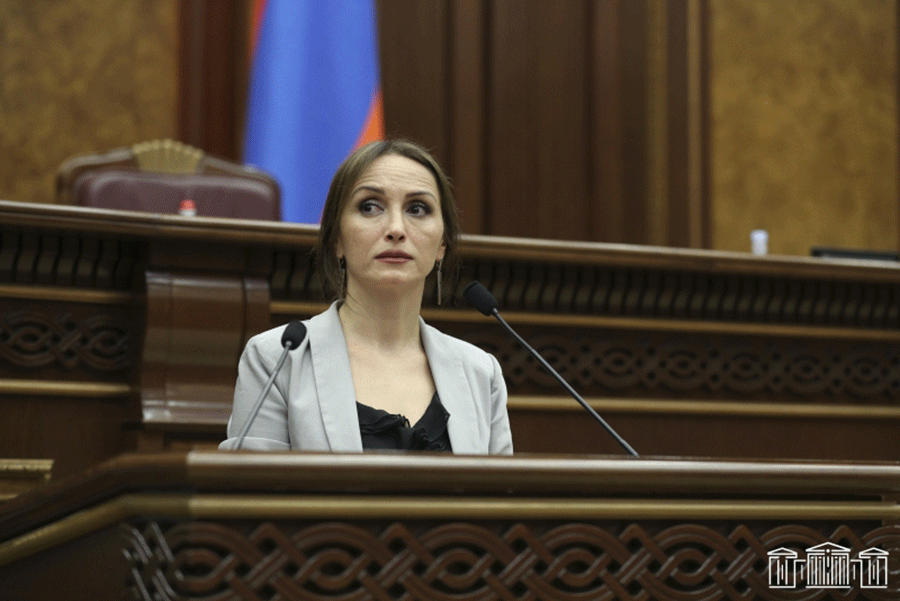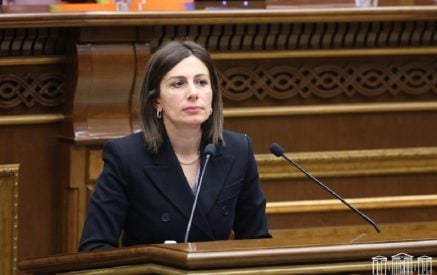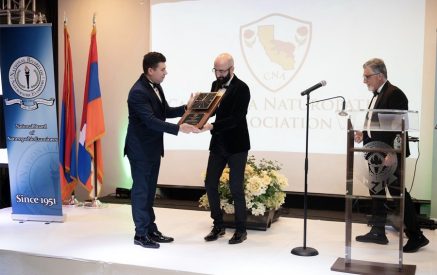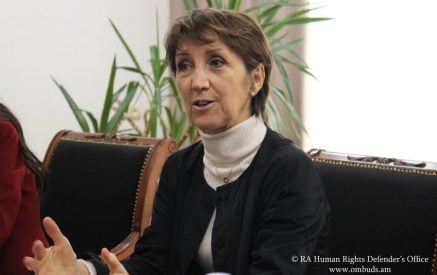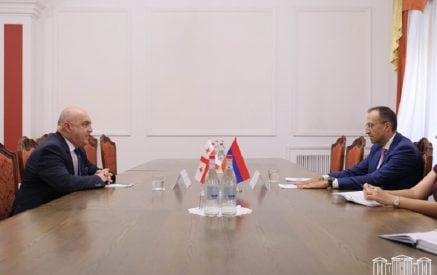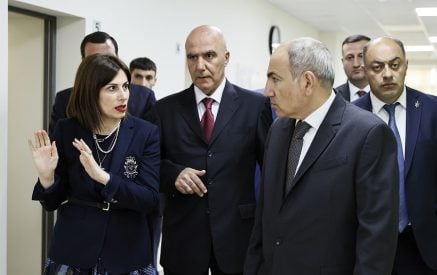The proposed addendum to the Law on Medical Care and Service to the Population prohibits the use of video recording devices in functional diagnostic cabinets, intervention rooms, hospital rooms, bathrooms and toilets of organizations providing medical care and service. And in case of using video recording devices, the organizations providing medical care and service should place awareness signs in the visible parts of their organization’s territory. They are placed so that they are visible before entering the video surveillance area.
At the NA regular sitting on September 12, the package of drafts on Making Addendum to the Law on Medical Assistance and Service to the Population and on Making Addenda to the RA Code on Administrative Offenses authored by the deputies of the NA Civil Contract Faction Narek Zeynalyan, Lusine Badalyan and Hrachya Hakobyan was debated in the first reading.
The key rapporteur, the Deputy Chair of the NA Standing Committee on Health Care Lusine Badalyan noted that the data obtained by the use of video recording devices can be saved in accordance with the procedure established by the Government. If a violation is detected, the videos are stored in the medical assistance and service organizations until the investigation of the violation case (including the appeal procedure) or the end of the official investigation, unless another term is provided by law. In order to support the protection of the patients’ rights and legal interests, videos are stored for at least one month, but no longer than six months.
The law is expected to enter into force from 1 January 2024.
Read also
It was also mentioned that the package of drafts was developed in close cooperation with the Ministry of Justice.
The deputy Armenuhi Kyureghyan inquired whether it is allowed to use those same devices in doctors’ rooms.
In response, it was noted that the draft was developed based on a number of complaints. According to Lusine Badalyan, the patients found a camera in the so-called manipulation rooms and appealed to the deputies, the Human Rights Defender, as a result of which the deputies wrote a prohibitive part of the article.
The deputy Gegham Nazaryan inquired in his turn whether the viewpoint of the opposite side was taken into consideration, whether the issue was discussed with the medical centres (MC).
“We have heard the viewpoint of the opposite side. The complaints are not widespread, not all the restricted rooms have cameras. After doing some research, we found out that these are cameras that have been installed for a long time, which were installed to control corruption risks,” the key rapporteur said.
The MP Tsovinar Vardanyan inquired whether plastic surgeries are allowed to be filmed.
In response, it was noted that video recording for advertising purposes requires the patient’s permission, but can never be prohibited for scientific purposes.
The MP Lilit Stepanyan inquired in her turn whether cameras are installed in the resuscitation rooms or not.
The key rapporteur stated that there are cameras in those rooms, but the Ministry of Health will decide whether to allow them or not.
The co-rapporteur, the member of the NA Standing Committee on Health Care Emma Palyan presented the endorsement of the Head Committee.
The co-rapporteur, the Minister of Health Anahit Avanesyan informed that the Government presented a number of proposals that were adopted. She touched upon several questions. It was mentioned that the Government will determine the places where video cameras will be installed. According to the Minister, there are video recording devices in resuscitation departments to prevent possible disputes.
The co-author of the package of drafts, the Chair of the NA Standing Committee on Health Care Narek Zeynalyan noted that the field is not regulated, and it is being regulated by the legislative initiative. According to him, the draft clearly defines the places where the installation of cameras is prohibited, and we also give the Government the opportunity to define the procedure for installing these devices. It was also noted that filming can be carried out anywhere, if they are based on the aims mentioned in the law. A fine of 50.000 AMD is set for violating the law.
The NA Vice President Hakob Arshakyan, generalizing the issue in his extraordinary speech, referred to information security and the issue of video recording of public places and other people’s private territories by individuals and legal entities and their dangers. It was noted that, in fact, the Internet availability is widespread all over the world and video recording devices have also become very affordable and they can be installed everywhere, connected to the Internet and have access from the given area, from anywhere in the world. According to Hakob Arshakyan, it is necessary to take into consideration the fact that most of the time these networks, which are used by video recording devices, can be accessible to the services of different countries, to different citizens, and can be open on the Internet in general.
“We have a problem regarding the issue that any business entity, individual can install a video recording device in his porch, yard, other areas with good intentions and it can become available to people who should not have access to it,” Hakob Arshakyan said and added. “There is a somewhat regulated part here, which refers to people’s freedoms, the dissemination of their personal information, but by and large, this issue is neither technical nor complete, nor is it regulated in other zones. In fact, I wanted to voice this challenge, and we should also respond to this properly in the legislative sphere,” the NA Vice President concluded.
National Assembly of the Republic of Armenia



















































